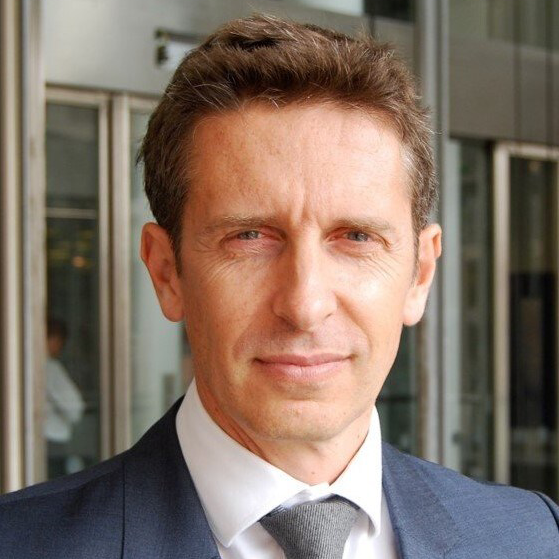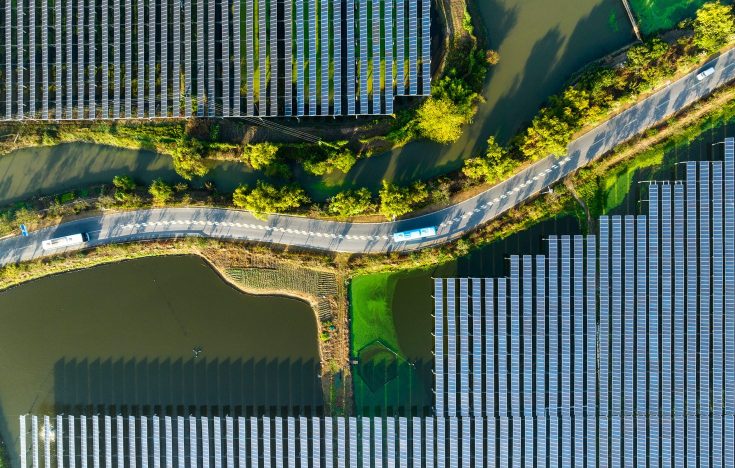2023 was a pivotal year for sustainable finance, marked by rising interest rates and inflation as well as geopolitical turbulence. As we move into 2024, experts from across BNP Paribas in Europe, the Americas and Asia share their insights on the innovations and strategic shifts shaping the sustainable bond market in the recent feature by Environmental Finance for the Sustainable Bonds Insight 2024 report.
The teams highlight how the evolution across various sustainable finance innovations demands leadership, integrity and a pragmatic approach to ensure meaningful progress towards the low-carbon transition.
Balancing innovation with pragmatism
Frederic Zorzi, Global Head of Primary Markets, BNP Paribas CIB, underscores the complexity of executing sustainable strategies, emphasising the need for integrity and leadership: “One of our jobs is to get to this level where we can have impact while keeping track of the needs of our clients, and having something which is sustainable over the long term.” One of the key challenges in the market across sustainable finance is demonstrating integrity and leadership when it comes to ensuring a material impact on real-world issues across the corporate and investor universe.

❝ The goal is to finance a transition, supporting the journey of our clients and investors, and fix ourselves to clear targets while maintaining this balance. ❞
A key area of market development has been the increasing focus on transition labels. The International Panel on Climate Change estimates that greenhouse gas (GHG) emissions globally must decrease by 43% by the end of this decade to keep global warming to a maximum of 1.5°C. Therefore, innovating on sustainable finance across corporates, governments and investors to tackle these climate challenges remains critical for the industry to support hard-to-abate sectors and economies in transition, as explained by Constance Chalchat, Head of CIB Company Engagement and Global Markets Chief Sustainability Officer, BNP Paribas CIB.

❝ A key innovation to look for this year is how to introduce transition labels that value credible transition pathways of heavy emitting companies. ❞
The recent COP28 summit highlighted the importance of supporting emerging markets in the transition to a low-carbon economy. The International Energy Agency (IEA) estimates that emerging market and developing countries will need around US$2 trillion annually to reach net-zero emissions by 2050. This is an area where sustainable bonds could be a key source of development. Chalchat explains that innovation on sustainable outcomes for EM sovereign debt will be important when it comes to scaling up transition and new technologies in decarbonising across value chains: “Emerging market countries have a right to transition, and the world needs them to. They have the potential to be leaders in green hydrogen or provide major carbon sinks, so there is a collective focus on how we finance those projects.”
Regulation and standards driving demand and supply in Europe
BNP Paribas teams estimate that close to 20% of transactions were labelled in EMEA in 2023. This contrasts with this year, where the figure had already risen to over 50% of corporate transactions in January 2024. Agnès Gourc, Head of Sustainable Capital Markets, BNP Paribas CIB, observes: “I don’t expect that trend to necessarily continue throughout the year, but it is still a sign of interesting momentum in the European segment.”
There is also sector diversification in the issuer profile, where Gourc notes that there are not many sectors left to come to the market, and that the latest regulation and standards have proven helpful for enabling greater guidance for market participants.

❝ For industries such as cement, steel and chemicals, the EU Taxonomy and International Capital Market Association (ICMA) have been helpful in providing guidance to the market. The new ICMA Task Force on Green Enabling Activities could further help those industries come to market. ❞
Recent regulation across the EU has spurred demand from investors for labelled issuance explained Franck Rizzoli, Head of ESG Financing Advisory, BNP Paribas CIB: “You need to be able to demonstrate impact for Article 8 or 9 funds. Having use of proceeds (UoP) bonds clearly helps demonstrate that. As a result, appetite for such transactions has increased over the past 18 months.”
This demand supply cycle between issuers and investors centres on demonstrating impact, explains Rizzoli.

❝ If there is more demand from investors, it makes it easier to convince issuers that they will be able to attract additional demand if they have a strong framework and can demonstrate impact to investors. ❞
Contrasting forces across the Americas
In the Americas, the IRA has been a driver of activity across capital markets. Anne van Riel, Head of Sustainable Finance Capital Markets Americas, BNP Paribas CIB, explains its impact: “Green bonds have been spurred by the Inflation Reduction Act (IRA), with investments in renewable energy, hydrogen, and other decarbonisation efforts” and this is reflected in the issuance profile where she notes that “we continue to see the majority of bonds issued with a green label.”
This contrasts to Latin America where there has been a greater emphasis on social bonds, and Sustainable-Linked Bonds (SLBs) are also a more popular format as “there is a focus on social in Latin America – SLBs are also more popular there”, notes Van Riel.
The team’s figures highlight that 38% of the total bonds issued in Latam in 2023 were SLBs, in stark comparison to 8% on a global level. More broadly across Latin America, sovereigns are a key player in terms of innovation on sustainable finance.

❝ Sovereigns are really pushing the boundaries in the region: the main drive for innovation is coming from Latin American sovereigns. ❞
Transition bonds catalysing decarbonisation in APAC
In Asia, the discussion on transition finance remains front and centre across several market segments. Chaoni Huang, Head of Sustainable Capital Markets, BNP Paribas APAC, points out: “The transition bond has become a valuable means for governments and banks across Asia to engage investment and implement decarbonisation at scale.”
The regulation driver is also present in Asia, where there has been increased momentum to develop taxonomies, such as the ASEAN Taxonomy Version 2. Huang explains that this helps “to ensure stringent standards are upheld, and capital is being channelled towards credible projects that will help the region’s transition.”

❝ The APAC region has quickly become a key market for issuers, governments and investors to accelerate the low-carbon economy transition. ❞
Expect a robust but complex market dynamic ahead
BNP Paribas Markets 360 forecasts USD$600 billion in green bond issuance this year, growing to US$850 billion within the next two years. Trevor Allen, Head of Sustainability Research at BNP Paribas Markets 360, explains:
“A key catalyst for this growth is over the three years we’re going to see US$660 billion of maturities from the green bond market. In 2024, 70% of these maturities alone are going to be from corporates.”
In a year where the macroeconomic rates cycle is loosening, this will impact conditions across the sustainable bond market, predicts Allen.

❝ We think 2024 is going to be a transition year where interest rates will come down and market conditions will be more favourable for renewable energy and EV projects to start growing – and for corporates to continue issuing. ❞
As the sustainable bond market continues to evolve, BNP Paribas expert insights underscore the complex interplay of innovation, regulation and market dynamics shaping the future for sustainable finance.
BNP Paribas’ green and sustainability-linked bond market expertise
BNP Paribas has been recognised as an industry leader in the sustainable bond market for several consecutive years.
The Bank secured its #1 position in Bloomberg’s Full-Year Global Green Bond Manager League Table for Corporates & Government for the second consecutive year in 2023. The Bank also ranked #1 in Dealogic’s Global Green Corporate Bonds Volume League Table 2023, and was ranked highly in Dealogic’s Global Sustainability-Linked Bond Volume by Bookrunner for the full year 2023.
BNP Paribas’ leadership in innovations on the market was recognised by IFR (International Finance Review) resulting in 2023 IFR Top Global Awards – Bond House and ESG Financing House – and by Euromoney as ‘The World’s Best Bank for Sustainable Finance’ for a third consecutive year.
CLICK HERE TO READ THE FULL FEATURE IN ENVIRONMENTAL FINANCE
